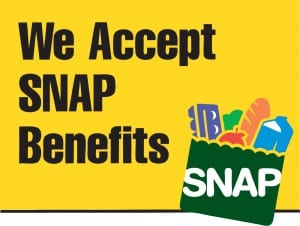
With the new Farm Bill signed, the program will see another deep cut of around $8.6 billion over the next decade. These changes could affect not only the people who receive food stamps, but also the companies where they spend them. Walmart, which accounts for about 18% of SNAP spending, has named the cuts in SNAP benefits as one of the reasons for their recent disappointing revenue.
If you’re considering a franchise that deals with food, be sure to give SNAP some thought.
A little known part of the SNAP program, otherwise known as the food stamp program, is the SNAP Restaurant Meals Program (RMP). Every state has the option to participate by working with the USDA without having to enact any extra legislation but only three states currently participate in the program: Arizona, California, and Michigan. The program provides meals for eligible people who can’t cook for themselves, including the elderly, disabled, and homeless. Entrepreneurs in restaurant and quick service franchises should pay attention to changes in the SNAP program, especially if they’re operating in these three states. Other states can add SNAP RMP to their SNAP participation at any time without the need for extra legislation so there’s also the potential that if you’re not in a state with SNAP RMP participation it might be added.
SNAP benefits cannot otherwise be used for hot prepared foods, but they can be used for packaged foods and sodas, sold in many franchise locations.
Other franchises that might be affected include health care and home health franchises that provide or deliver meals to certain types of individuals. Franchises that deliver hot, prepared meals to the elderly, for example can accept SNAP even in states that don’t participate in the RMP program. Those franchisees might see huge drops in revenue if they depend in large part on SNAP dollars.
With the newest round of cuts in the SNAP program, there are fewer SNAP dollars to go around for those on the program. Families that have relied on SNAP to cover their food bills may have to divert dollars to the grocery store. Chances are good that these households will cut back in other areas to make up for the losses in food assistance. That means that franchises who serve the populations that receive these benefits may be affected.
Since some 46 million Americans — particularly families with children and the elderly — receive these benefits, that could be a lot of franchises. In some states, such as Oregon and New Mexico, nearly one quarter of the population receives some SNAP benefits. Nationally, about one in seven Americans receives some food assistance. Franchises serving the elderly, children, or lower income Americans may see the effects this year or in the future.
Since the first round of cuts took place in November, any franchise business opportunity you’re researching now should be able to tell you whether they’ve seen effects yet — and it’s worth asking.


